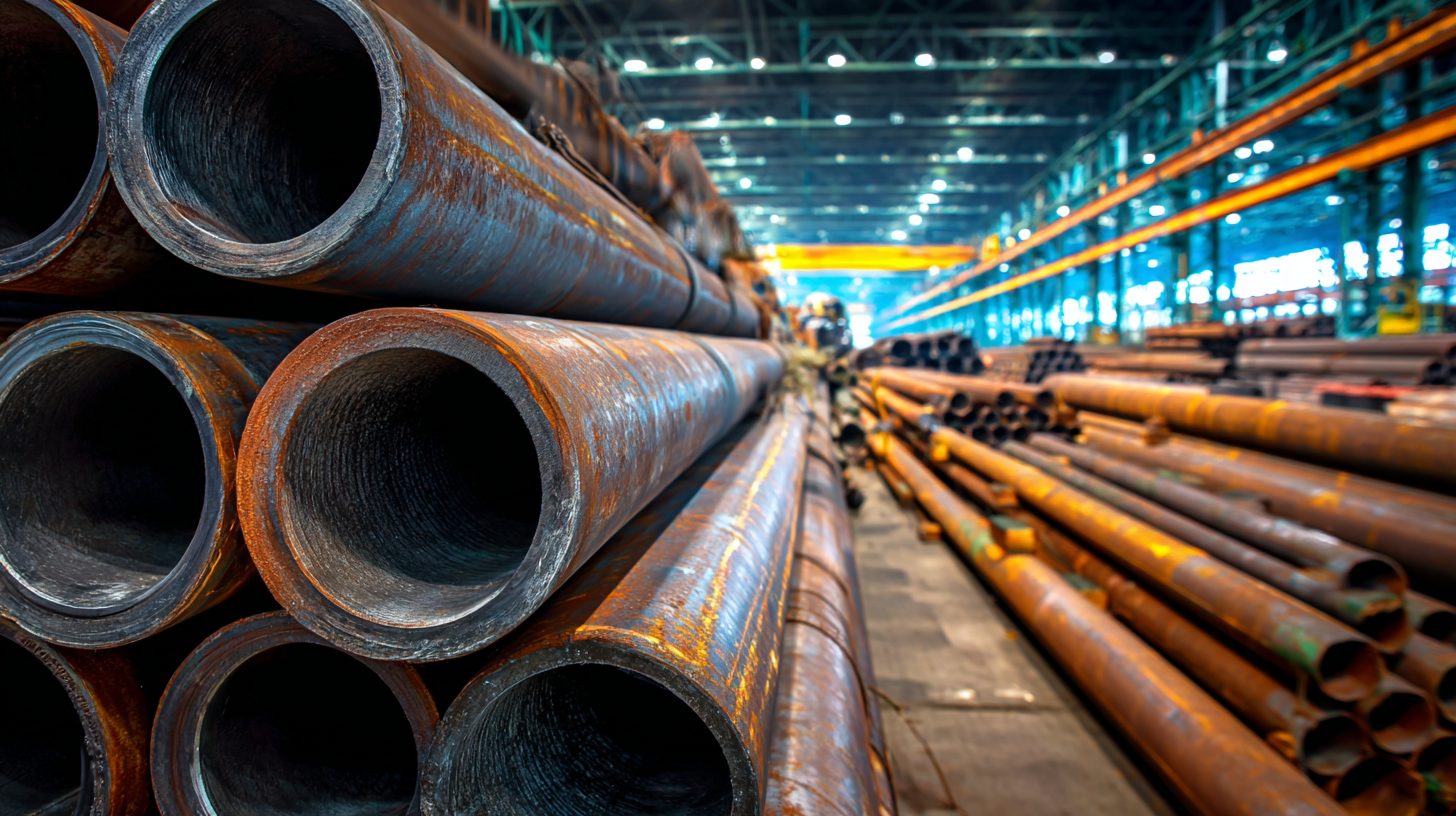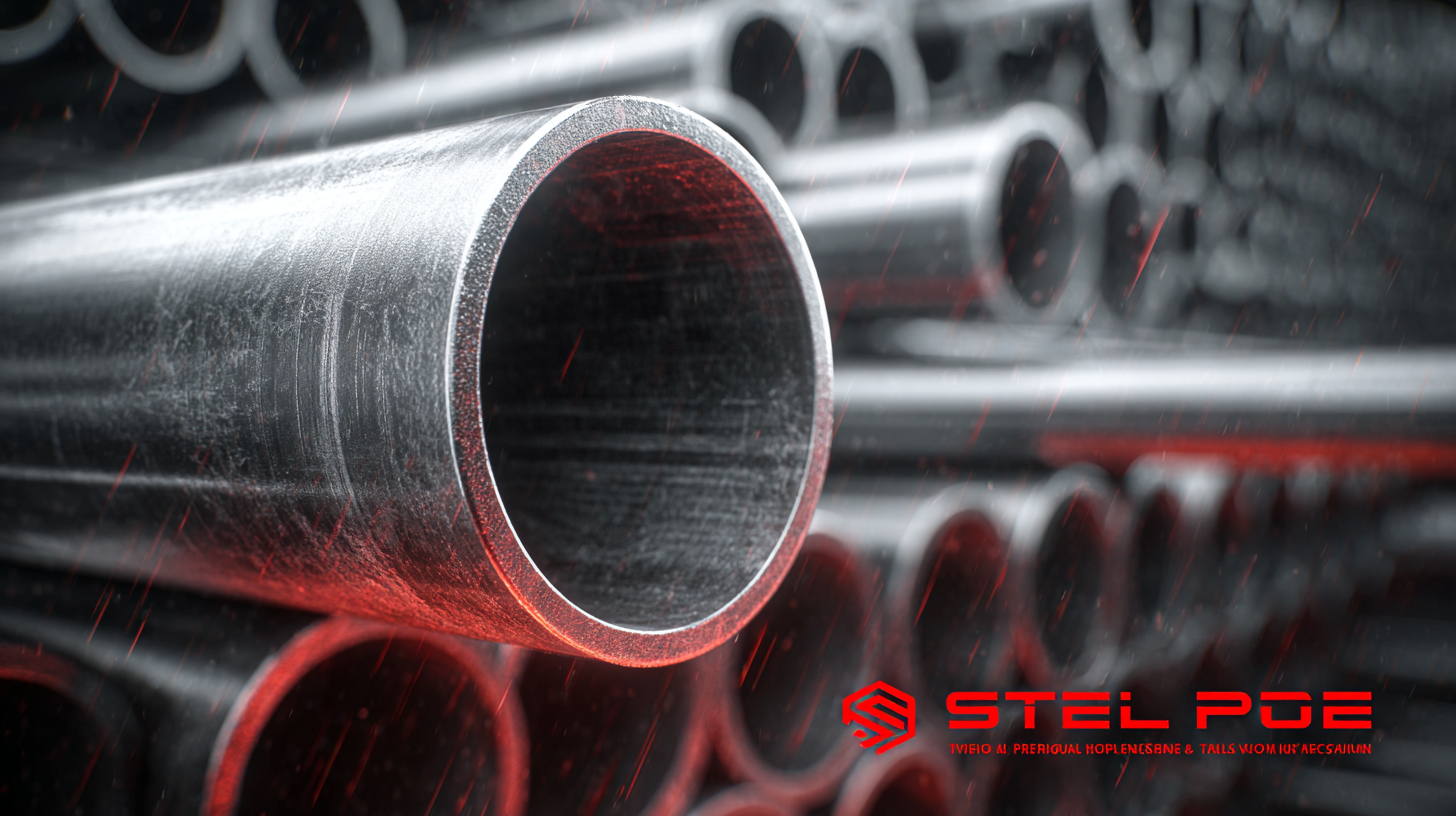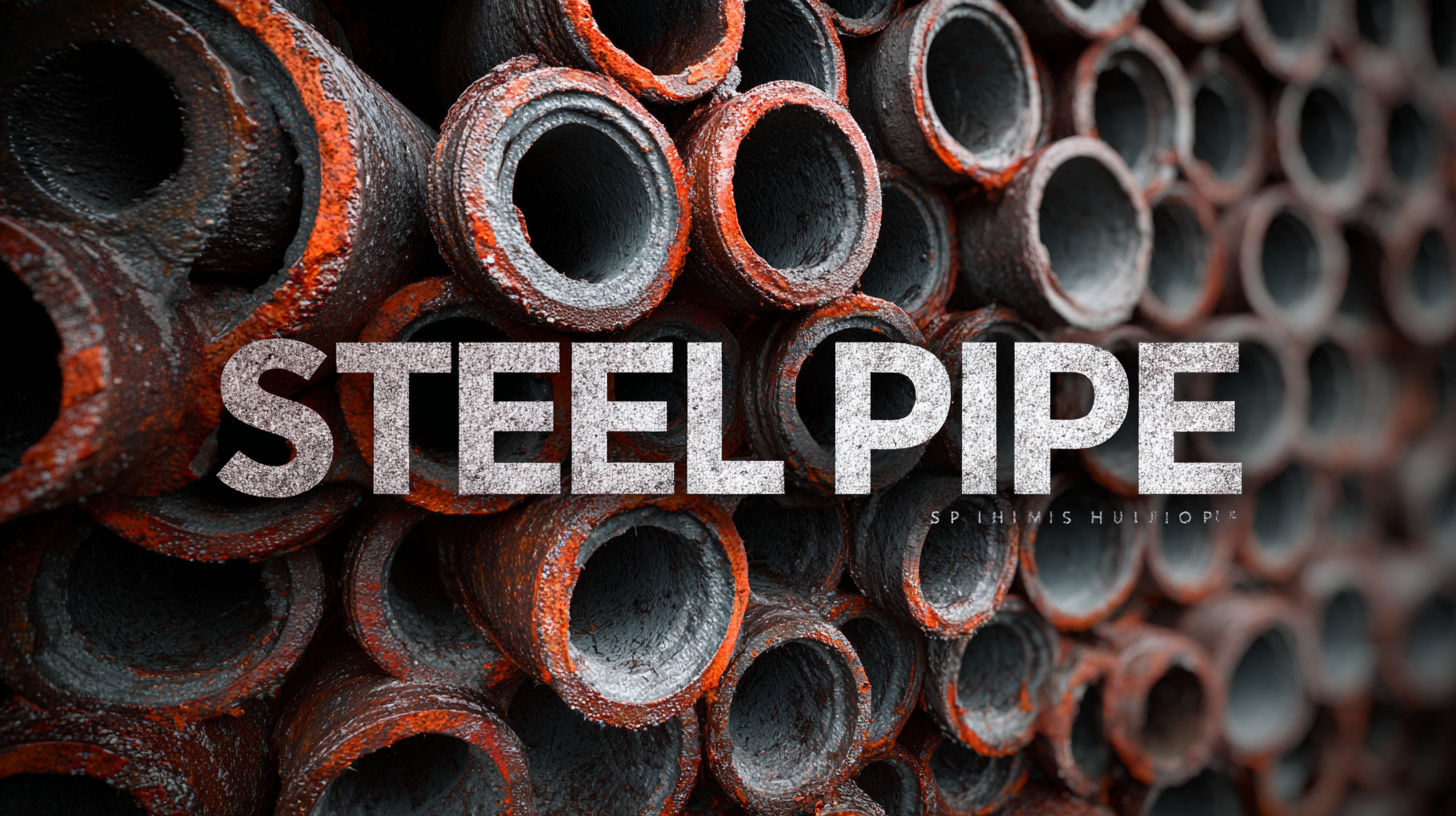In the realm of construction and manufacturing, selecting the right materials is crucial for ensuring durability and efficiency. Among these materials, Steel Pipes stand out due to their strength, versatility, and cost-effectiveness. According to the Global Steel Pipe Market Report, the market is projected to grow at a CAGR of 3.2% from 2021 to 2026, driven by increasing demand across various sectors, including oil and gas, automotive, and infrastructure development. As businesses and engineers navigate this dynamic landscape, understanding the technical specifications of Steel Pipes becomes essential for making informed decisions. This guide will delve into the best practices for evaluating Steel Pipe specifications, emphasizing critical factors such as material grades, dimensions, and compliance with industry standards, empowering professionals to choose the right Steel Pipe solutions for their specific needs.

When exploring steel pipe grades, it's essential to understand their classifications and the properties that define their performance in various applications. Steel pipes are typically categorized based on their chemical composition, mechanical properties, and structural features. The most common grades include carbon steel pipes, alloy steel pipes, and stainless steel pipes, with each type offering distinct advantages. For instance, stainless steel pipes are known for their excellent corrosion resistance, making them ideal for environments where exposure to harsh chemicals or moisture is prevalent.
As the demand for stainless steel seamless pipes continues to grow, projected from USD 3.37 billion in 2024 to USD 5.15 billion by 2030, understanding the key specifications such as yield strength, tensile strength, and heat treatment processes becomes increasingly important. These factors not only influence the choice of pipe for specific applications but also affect long-term durability and safety, especially in critical infrastructure projects like buried fuel pipelines. Additionally, awareness of external factors like corrosion and seismic vulnerabilities plays a crucial role in the selection process, ensuring that the chosen steel pipe can withstand various environmental challenges.
When exploring the steel pipe industry, it’s essential to focus on the key technical specifications that influence the choice of steel pipes for specific applications. The market for stainless steel seamless pipes is on the rise, projected to reach USD 5.15 billion by 2030. This growth is attributed to the pipes' durability, corrosion resistance, and versatility, making them suitable for sectors such as oil and gas, construction, and manufacturing.
One critical specification to consider is the material grade, particularly for applications in corrosive environments. Stainless steel 304 and 316 are popular choices due to their excellent mechanical properties and resistance to corrosion. Additionally, manufacturers often provide data on yield strength and tensile strength, which are necessary to ensure the selected pipe can withstand internal pressures and external forces.

Tips: Always check for certifications and compliance with relevant standards such as ASTM or ASME, as this guarantees the reliability and safety of the pipes. It’s also wise to consult with industry professionals to match the pipe specifications to your project’s unique requirements, ensuring optimal performance and longevity in service.
When choosing the right steel pipe material, it's essential to compare the distinct characteristics of carbon, stainless, and alloy steels. Carbon steel, known for its strength and affordability, is widely used in various applications. However, in environments that expose materials to corrosive substances, carbon's susceptibility to rust may necessitate a switch to stainless steel. Recent studies have demonstrated that stainless steel exhibits excellent corrosion resistance, making it a preferred choice for challenging conditions, such as those found in industrial cooling water systems.
Alloy steel, on the other hand, offers enhanced properties through the addition of other elements, providing better performance in specific applications. For instance, in marine construction, alloy steels are often selected for their durability and resistance to harsh conditions. Additionally, the findings on the corrosion behavior influenced by elements like calcium indicate that careful consideration is needed when selecting materials based on the operational environment. This systematic comparison is crucial in ensuring that the right steel pipe is chosen for both performance and longevity.
When selecting the right steel pipe for your project, application-specific considerations play a crucial role. The intended use of the pipe will guide you in choosing the appropriate materials, dimensions, and specifications. For instance, in the oil and gas industry, high-grade steel pipes that can withstand extreme temperatures and corrosive environments are essential. On the other hand, for plumbing applications, standard carbon steel pipes might suffice, focusing more on cost-effectiveness and ease of installation.

Moreover, understanding the environmental conditions in which the steel pipe will function is key to making an informed decision. If the pipe will be exposed to moisture, selecting galvanized or stainless steel options can prevent rust and extend the lifespan of the installation. Additionally, it’s important to consider the necessary pressure ratings and the potential for mechanical stresses that may occur during usage. Consulting with industry guidelines and technical specifications can further ensure that the selected steel pipe meets both safety and operational requirements.
When selecting steel pipes for your projects, it’s crucial to consider the balance between cost and quality. Although cheaper options may seem appealing on the surface, they often compromise on durability and performance, resulting in higher long-term expenses due to maintenance and replacements. Investing in high-quality steel pipes can lead to increased safety and longevity, making them a smarter choice for critical applications such as construction and infrastructure.
Evaluating price points in steel pipe selection requires an understanding of the specific requirements of your project. Factors such as material grade, coating, and compliance with industry standards can significantly influence the price. While it’s tempting to opt for the lowest-cost option, it’s essential to assess how well the product meets your project’s specifications. A small increase in upfront investment could save substantial costs associated with downtime and repairs, ensuring that your project runs smoothly and efficiently over its lifespan.
| Diameter (inches) | Material Grade | Thickness (mm) | Length (feet) | Price per Foot ($) | Typical Applications |
|---|---|---|---|---|---|
| 2 | ASTM A53 | 3.05 | 20 | $10.50 | Construction, plumbing |
| 4 | ASTM A106 | 4.00 | 30 | $15.00 | Oil and gas, structural |
| 6 | API 5L | 6.40 | 40 | $20.00 | Water transmission, pipelines |
| 8 | ASTM A500 | 8.00 | 30 | $25.00 | Building frames, support structures |
| 10 | ASTM A312 | 9.53 | 20 | $30.00 | Chemical processing, heat exchangers |



